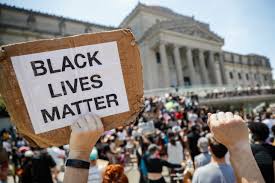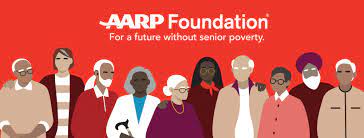4.5 Impact of Social Movement and Interest Groups on Governments
7 min read•june 18, 2024
Isabela Padilha
Harrison Burnside
Kelly Cotton
AP Comparative Government 🗳️
90 resourcesSee Units
Now that you understand the structure and function of political parties, in this topic, you are going to build on that knowledge to be able to explain how social movements and interest groups can affect social and political change.
Here are the key concepts of this topic:
Social Movements
Social movements are large groups of people pushing collectively for significant political or social change.
Social movements👥 represent multiple groups and individuals advocating for broad social change, while interest groups focus on a specific interest or policy issue.
So let's look at a real-life example from the United States 🇺🇸regarding social movements and interest groups.
A current social movement would be Black Lives Matter and the desire for sweeping social and political change for black populations in America. The movement is composed of large groups of people, and together through protests and political action. The social movement is not focused on a single policy issue or specific interest but is, instead, focused on a sweeping change to all aspects of life.

Interest Groups
Interest groups are explicitly organized to represent and advocate for a specific interest or policy issue.
An example of an interest group in the United States would be the AARP or the American Association of Retired People. The AARP is an explicitly organized group of elderly individuals in the United States focused on policy issues facing retired persons, specifically social security. The difference between our two examples is that, unlike Black Lives Matter, the AARP requires dues, membership registration, and they have a specific leadership 🖤

The rest of the key concepts in this unit focus on social movements, not interest groups, so let's begin our exploration of social movements.
Our second key concept in this topic focuses on identifying some specific examples of how social movements across our course countries have put pressure on governments. The following examples were specifically mentioned in the CED and therefore are extremely important. Provided below are the brief examples from the CED with a great deal of extra detail so that you can better understand what the social movements were pushing through, and how they put pressure on the government in that course country 🔄
Comparing Social Movements
Iran 🇮🇷
The Green Movement was a social movement born out of the corruption identified in the 2009 presidential election. The goal of the Green Movement was to force the government into more transparent and fair elections. In addition to protests, the reformists also attempted to implement reform through legal processes and set up a new coalition called the Green Path of Hope.
The goal of the coalition was to bring together NGOs, political parties, and social networks to ensure transparent elections and the rights promised under the Constitution. The Guardian Council did allow for a recount of 10% of the votes but reported that they found no irregularities in the vote and dismissed all election complaints.
Mexico 🇲🇽
The Zapatistas, or Chiapas, uprising in Mexico was a social movement in response to socioeconomic inequality and the negative impact of the North American Free Trade Agreement (NAFTA) on indigenous peoples. The Zapatistas is classified as a social movement as it involved the call for work, land, housing, food, health, education, independence, liberty, democracy, justice, and peace for indigenous people. This is a wide-sweeping list of demands for both political and social change.
In Mexico, the government responded to the pressure of the social movement by passing the Indigenous Rights Bill of 2001 that provides Indian groups preferential use of natural resources like wood and water on their territories to meet their own needs. The bill also guarantees the right to preserve and promote Indian languages and culture and the power to elect Indian officials according to customs that often involve a vote by an open assembly, rather than by a secret ballot.
Nigeria 🇳🇬
In this course country there are two specific examples to be aware of. Movements in Nigeria (often militant), including the Movement for the Emancipation of the Niger Delta (MEND) and the Movement for the Survival of the Ogoni People (MOSOP), which have emerged to advocate for the rights of an ethnic minority or protest against unjust methods of extraction and distribution of oil in the Niger Delta region. The MEND is a loose web of armed groups in Nigeria who use a variety of means to attack the Oil industry in the area in order to bring about a larger share in the oil wealth for the Niger Delta.
This group wants to change the social and economic standing of the people of the Niger Delta. The group is extremely disorganized, having recently split into one group that has accepted a cease-fire and another still attacking the oil industry and claiming to speak for all members of MEND. MOSOP is simply an umbrella organization of 11 different organizations fighting for social, economic, and environmental justice in the Niger Delta. Using non-violent actions, the group has been able to bring international attention to the issues in the Niger Delta with its protests against the Shell oil company in the 1990s to try and put pressure on the government to enact change.
The Boko Haram movement is attempting to establish an Islamic state in northern Nigeria. It is another loosely organized military operation that is trying to put pressure on the Nigerian government to allow the group to create an Islamic state in Northern Nigeria.
The group has used a number of violent means, such as kidnappings bombings, and assassinations, to put pressure on the National government to allow them to create their independent state. The government has responded with the use of military force to eliminate this group, which continues to exist and be a threat to human rights internationally.
Russia 🇷🇺
The Russian state Duma’s passage of legislation against same-sex couples in 2013 has led to massive domestic protests to change society and how it views same-sex couples. The protests are not led by a specific organization but rather by loosely organized groups pushing for radical social change in the state. Protestors have been beaten and imprisoned. The government has not changed any policies to this point.
UK 🇬🇧
As the UK is a democratic regime, there are a lot of relevant social movements that have taken over the country the past few years. However, the one that seems to have gained more momentum is the environmental movement. As one of the earliest countries to industrialize, the UK has been a great contributor to air and water pollution. The British population has become incresingly concerned about its negative environmental impact and this movement demands the adoption of more comprehensive environmental policies.
China 🇨🇳
China also has a history of social movements, such as the May the Fourth Movement, which took place in 1919 and advocated against foreign influence and the dealing of the government in relation to the Treaty of Versailles. This was a crucial moment for modern China. More recent movements include the fight for Uighur Rights, which have brought as its goal to raise awareness about the human rights abuses committed from the government against this Muslim minority. However, social movements in China are usually rapidly suppressed by the government.
The next key concept to be discussed in this topic is the idea that grassroots social movements exert their power up from the local level to the regional, national, or international level. This is evidence by the examples provided above. The social movement examples discussed previously all began at a local level and then progressed as they increased in participation to regional, national, or international levels 🌎
Remember this concept: Grassroots movements are social and/or political movements that emerge from the "grass roots" or rather, from ordinary people. They have a decentralized nature and rely on the activity of ordinary people.
The final key concept in this unit revolves around the idea that with limited organizational hierarchies, such movements are difficult for state-run military or law enforcement to suppress. But, some social movements also have difficulty in attracting and mobilizing support among fellow citizens or negotiating with governmental representatives. So, let's analyze the pros and cons of social movements: ✊🏽
- A pro for social organizations is that it is often difficult for governments to suppress 🤫 them because they are widespread and almost unidentifiable, as often they do not have clearly defined leaders or structures for the government to track. An easier way to think of it is that the anonymity of large social movements offers a level of protection.
- A con for social organizations is that, because there is not a clearly defined hierarchy of leadership, it is often difficult to bring about real change as there is not a single voice to speak for the group or their desires.
Example: Let us go back to our example in Nigeria 🇳🇬 MEND. This group has splintered. So even if the government wanted to negotiate with the group, you have one group within MEND that has stopped fighting and is willing to negotiate, but you have another segment of the group that is still attacking oil organizations and insisting it speaks for all members. If you are the government, which group do you negotiate with? You might say the cease-fire group, but the other off-shoots of MEND are unlikely to accept anything negotiated between the government and the cease-fire group. This makes it almost impossible to take actual action on the part of the government.
Browse Study Guides By Unit
👑Unit 1 – Political Systems, Regimes, & Governments
⚖️Unit 2 – Political Institutions
🙋♀️Unit 3 – Political Culture & Participation
🐘Unit 4 – Party, Electoral Systems, & Citizen Organizations
🏗Unit 5 – Political & Economic Changes & Development
🤔Exam Skills
📚Study Tools

Fiveable
Resources
© 2025 Fiveable Inc. All rights reserved.